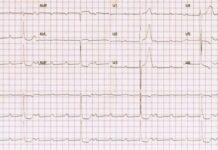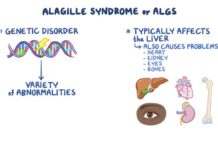The difference between the nutrients your body needs to function and the nutrients it receives is known as malnutrition. Undernutrition or overnutrition may be the cause. Malnutrition can result from a general shortage of calories or from a lack of protein, vitamins, or minerals. It’s also possible that you consume more calories than your body knows what to do with.
Types of Malnutrition
Undernutrition or overnutrition are both forms of malnutrition. It may also refer to an unbalanced intake of micronutrients (vitamins and minerals) or macronutrients (proteins, carbs, and fats).
Undernutrition
When most people think of malnutrition, they picture undernutrition. Nutrient deficit results in undernutrition. If your diet is insufficient or your body has difficulties absorbing enough nutrients from your meals, you may be undernourished. Both apparent and invisible muscle and fat atrophy can result from undernutrition. You can be malnourished and overweight.
Undernutrition in macronutrients
This lack of proteins, carbs, and lipids is also known as protein-energy undernutrition. The primary dietary components known as macronutrients are the nutrients your body needs to produce energy and maintain itself. Your body quickly starts to fall apart without them, or even with only one of them missing, destroying tissues and turning off unnecessary processes to conserve its meagre energy.
Undernutrition in certain nutrients (micronutrients)
Vitamins and minerals are micronutrients. These are required by your body in lower levels, but they are nonetheless necessary for a variety of processes. Because of a lack of variety in their diets, many people have moderate deficiencies in a number of vitamins and minerals. A modest vitamin deficiency may not be noticeable to you, but as micronutrient undernutrition worsens, it can start to have serious and long-lasting impacts.
Overnutrition
To acknowledge the potentially harmful health impacts of excessive nutrient ingestion, the World Health Organisation recently added overnutrition to its definition of malnutrition. This includes the consequences of being overweight and obese, which have a number of noncommunicable diseases (NCDs) in common. It also covers the toxicity that may be brought on by consuming too much of a particular vitamin.
Overnutrition of macronutrients
When your body has more calories than it can need, it stores the extra calories as fat cells in your adipose tissue. However, the fat cells themselves must expand when your body runs out of tissue for storage. Chronic inflammation and a variety of ensuing metabolic problems are linked to enlarged fat cells. These can result in NCDs like coronary artery disease, diabetes mellitus, and stroke.
Overnutrition in micronutrients
Supplementing with vitamins and minerals is actually possible. To understand how this occurs and how much of a particular vitamin or mineral is too much, more research is required. Micronutrient overnutrition is generally rare and is not caused by food alone. However, using extremely high amounts of some supplements can have toxic effects. Consult with your healthcare provider first, it’s a smart idea.
Who is impacted by malnutrition?
Malnutrition, in its broadest meaning, can impact everyone. Malnutrition is frequently caused by a lack of nutrition education, a lack of access to a range of foods, sedentary modern lives, and economic difficulties. Certain types of malnutrition are more common among certain populations.
Undernutrition is more prevalent in the following populations:
low income and poverty. Poorer communities have less access to proper nutrition, whether in affluent nations like the U.S. or in emerging nations with fewer resources overall.
Children. In order to develop and grow, children’s nutritional needs are greater than those of adults. Children from disadvantaged backgrounds are more at risk for undernutrition and its effects.
Persistently unwell. Numerous chronic conditions can negatively impact calorie absorption and/or appetite. Some raise your caloric requirements. Hospitalisation is another risk factor for undernutrition.
Elderly. Adults’ nutrition may decline as they age for a variety of reasons, including decreased mobility, institutionalisation, decreased appetite, and decreased vitamin absorption.
Overnutrition is more prevalent in the following populations:
Poor and low-income populations are among those most at risk for overnutrition. Poorer populations frequently have greater access to quick foods, which are heavy in calories but low in nutritional content, than they have to wholesome whole foods in developed countries. This may result in an excess of macronutrients and a deficiency of micronutrients.
Sedentary. Significant weight gain can result from desk work, family responsibilities, health issues, and societal circumstances that prevent people from getting up and moving around during the day.
What malnutrition symptoms and indicators are there?
Undernutrition may manifest as:
- Depleted fat and muscle, prominent bones, low body weight.
- Thin arms and legs and edoema (fluid-related swelling) in your face and tummy.
- Children’s intellectual and developmental development is stunted.
- Tiredness, dizziness, and weakness.
- Irritability, indifference, or apathy.
- Lesions, rashes, and dry, stretchy skin.
- Hair loss, thinning hair, and diminished hair colour.
- Infections that are severe and common.
- Inability to warm up due to low body temperature.
- Low blood pressure and heart rate.
Symptoms of overnutrition include:
- Obesity.
- Elevated blood pressure.
- Resistance to insulin.
- Heart illness.
What causes undernourishment?
Undernutrition is typically brought on by inadequate nutrient intake. Additionally, some medical problems that impair vitamin absorption can contribute to it.
- If you have: You could struggle to absorb adequate nutrition.
- insufficient financial resources.
- limited availability of nourishing foods.
- illnesses that make eating challenging, such as nausea or swallowing issues.
- illnesses that drain calories, such as cancer or persistent diarrhoea.
- increased calorie requirements, such as those that arise during pregnancy, lactation, or children.
- Mental health disorders including depression or dementia inhibit eating.
- eating problems including bulimia and anorexia.
- diseases that cause malabsorption, such as inflammatory bowel disease or pancreatic insufficiency.
- a condition that need ongoing intravenous nutrition.
- a diet that is extremely constrained or unappealingly chosen by someone else.
Overnutrition results from taking in more nutrients than you require.In the event that you have:
- little options for nourishing cuisine.
- a sedentary way of life.
- a medical condition, like hypothyroidism, that causes your metabolism to slow down.
- a hormonal imbalance that messes with your body’s signals of appetite and fullness.
- stress that is ongoing.
- depression or anxiety.
- binge eating syndrome.
- long-term excessive dietary supplement use
How is malnourishment handled?
Nutritional supplements are used to treat undernutrition. This could entail supplementing with specific micronutrients or refeeding with a specialised, high-calorie nutritional mix created to replenish everything your body has lost. It may take weeks of refeeding to treat severe undernutrition. Refeeding, however, poses a risk, particularly in the initial days. Your body adapts to undernutrition in many different ways. Refeeding forces it to return to its previous mode of operation, which can sometimes be more than it can handle. Refeeding syndrome problems, which can be significant and even life-threatening, are best avoided and managed by starting refeeding while being closely monitored by a medical professional.
Treatment for overeating typically involves diet, lifestyle, and weight loss. Your chance of developing secondary illnesses like diabetes and heart disease can be decreased by losing excess weight. Diet and exercise regimens, medicines, and surgical procedures are all possible forms of weight loss treatment. Additionally, you might need to get treatment for a mental illness or an underlying ailment like thyroid disease. Depending on the route you take, weight loss might be quick or it can be slow and steady. However, the lifestyle modifications you maintain once you’ve lost weight will help you keep it off. Long-term support systems like counselling, behavioural therapy, support groups, and nutrition education may be used in this.






































